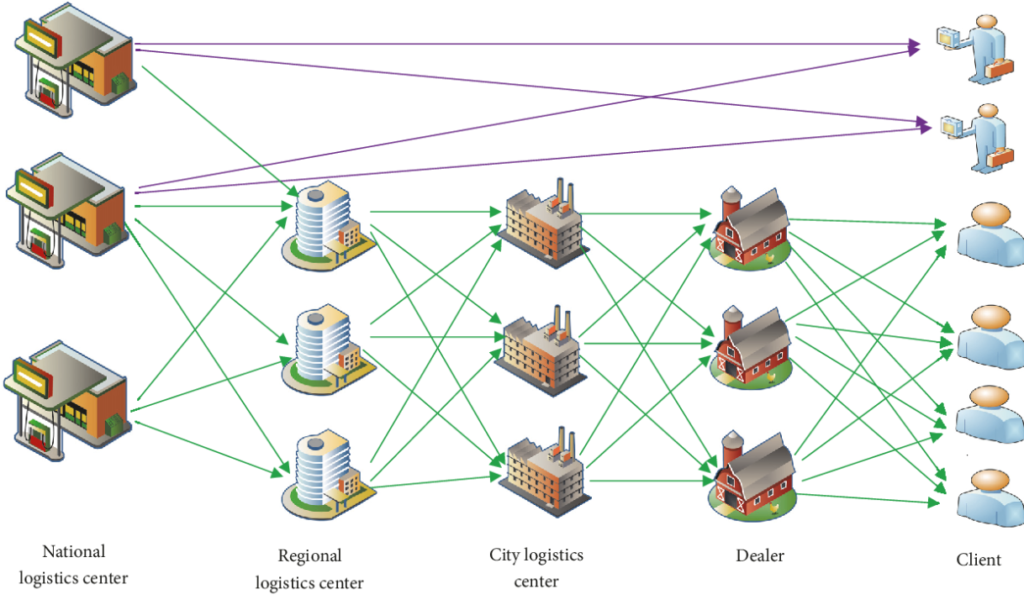Rethinking Supply Chain Networks in the Era of AI
November 17, 2023
By Shan Choudhry

The world of business is quickly evolving to adapt and capitalise on the opportunities offered by Artificial Intelligence (AI) and data. AI has enabled organisations to automate their operations, improve performance, reduce costs, and manage risks more effectively. Transportation performance creates the largest impacts on the overall business outcomes but is also one of its most complex functions. Supply chain is business operations that can benefit terrifically from AI. As our world becomes increasingly interconnected, entire supply chain networks are becoming increasingly complex.
AI has the potential to help organisations address these complexities and optimise their supply chains more effectively.
Breaking down the Supply Chain Network Design and Management
Supply chain management (SCM) is the process of managing and overseeing a company’s supply chain network and all activities involved. It includes the coordination, control, and integration of all processes in the journey a product takes from creation to consumption. Supply chain network design is a crucial element of a shipper’s business strategy.

SCM is a vital aspect of overseeing a profitable business because managing resources efficiently while adapting to changing market conditions is essential to keeping an organisation running smoothly. By tracking inventory and ensuring that it is delivered on schedule, supply chain organisations can increase their competitiveness, ensuring their products are readily available and priced competitively.
Foundations of an Efficient Supply Chain Network Design
Shippers have to be proactively prepared to address supply chain disruptions as they happen in the modern age. Many companies now focus on building agile supply chain operations as they navigate fluctuations in demand and freight rates. The volatile market is encouraging shippers to reevaluate their network design in order to build or rebuild it around proactive measures rather than reactive ones.
Regardless of the level of technology, all shippers have to work with logistics providers that have expertise in the complexities of building a network design—as well as a fully managed set of solutions that will enable any network design to the next level based on shippers’ particular needs.

A typical network design cycle consists of the following steps: Define objectives, gather the data, model the network, analyze the output. Every company these days has plenty of data, but too often it’s incomplete or inconsistent. Feeding this kind of data into a traditional, non-AI supply chain design tool without doing expensive data cleaning beforehand will not result in a useful model.
The baseline will be flawed, so creating an optimisation will not be possible. That’s why supply chain network design typically relies on heavily curated data. But this leads to a different kind of problem: a “brittle” baseline, one where users can’t flexibly create scenarios around new or unknown conditions. On the other hand, a network design tool with built-in AI capabilities can effectively handle incomplete or inconsistent data and create a more flexible baseline.
The Impact of AI on Supply Chain Management:
AI algorithms can analyse historical data to predict demand, inventory levels, and lead times. This enables supply chain managers to optimize inventory levels and avoid stockouts. AI-powered natural language processing can be used to monitor customer feedback and social media posts to identify potential supply chain issues before they become major problems.

AI can be used to monitor and analyse environmental data, such as sea temperature, pollution levels, and weather patterns, which can help shipping companies make more informed decisions about route planning and fuel consumption. AI can be used to optimize supply chains by predicting demand and adjusting shipping schedules, routes, and even inventory. UPS has begun to operate with an AI-powered navigation system that automatically updates drivers’ routes, constantly creating the most efficient route.
Applying AI to Supply Chain Network Design
In the transportation industry, AI is being used to develop autonomous vehicles and systems that can optimize routes on the fly. With AI-driven autonomous vehicles operating with a 99.9% confidence rate within 0.5m.

Walmart uses AI-driven automation for its warehouses, which helps them to optimize their inventory levels by automatically reordering stock when necessary. This has resulted in a 20% reduction in warehousing costs since making the switch, and the superstore plans to further integrate AI into its supply chain operations in the future.
Verdict
The potential of artificial intelligence is hard to ignore. There will be a continued transformation of the shipping industry as AI is used to optimize supply chains, predict demand, and adjust shipping schedules, routes, and even inventory. Supply chain leaders have been using technology to design and optimize their supply chains for decades. These days, they’re trying to understand the best way to integrate artificial intelligence and large language models (LLMs) into their existing set of tools.